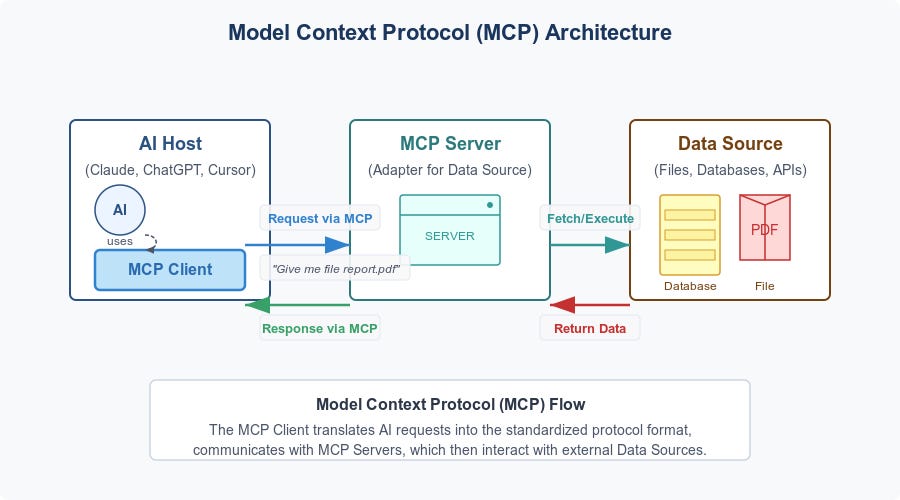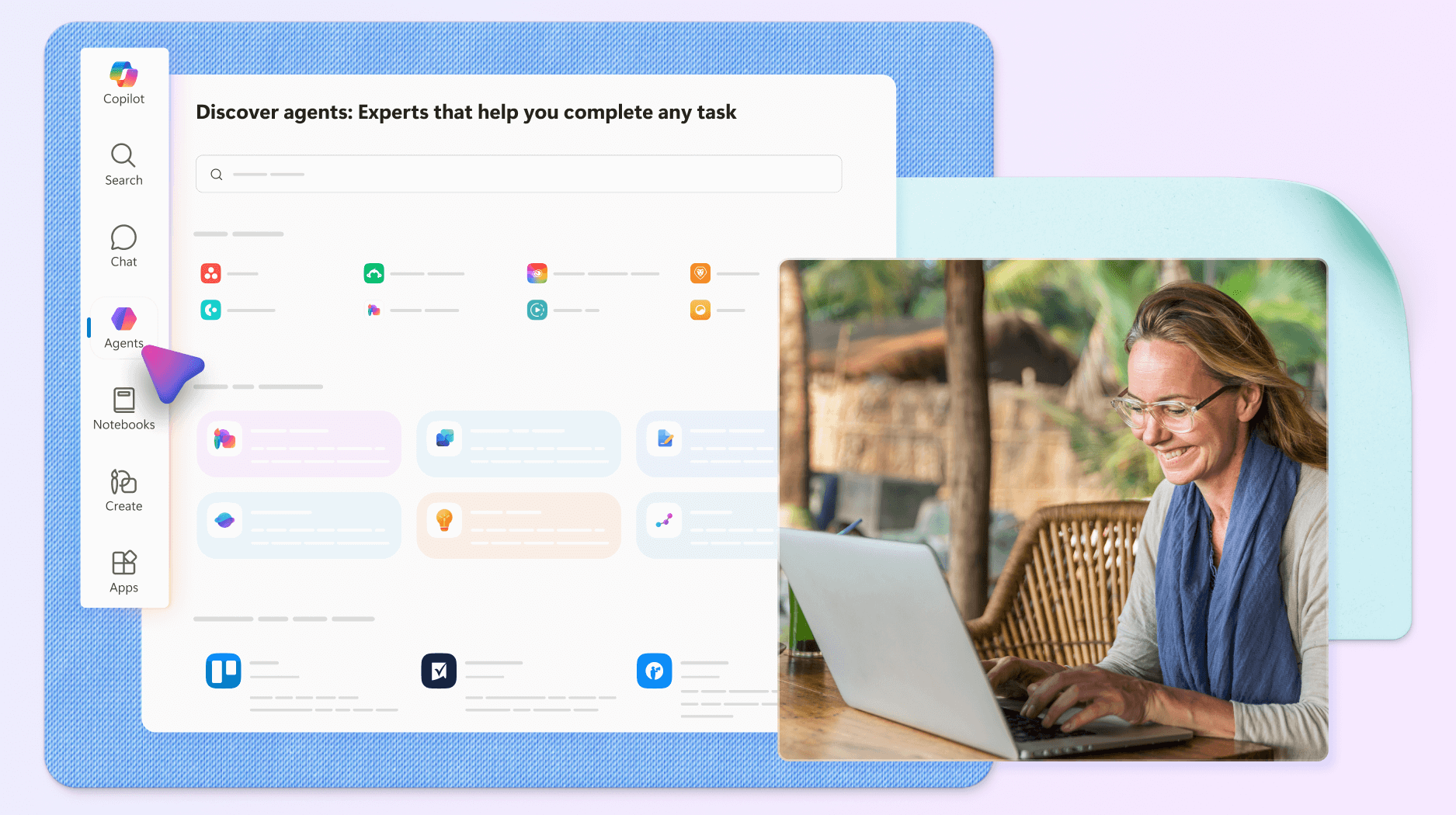What is Model Context Protocol (MCP)? A Simple Guide

Model Context Protocol (MCP) is a new technology standard that makes it easier and cheaper for businesses to connect their AI systems with their existing data and tools. If you're wondering what MCP means for your organisation, this guide explains everything in plain English.
Understanding MCP: The Simple Explanation
Model Context Protocol is like a universal adapter for artificial intelligence. Just as a universal phone charger works with any device, MCP allows any AI system to connect with any business application or database using the same standard method.
Before MCP, connecting AI to your business systems required custom programming for each connection. This was expensive, time-consuming, and required specialised technical expertise. MCP changes this by providing a standardised way for AI and business systems to communicate.
Why MCP Matters for Your Business
The Old Way Was Expensive and Slow
Previously, if you wanted your AI assistant to access your customer database, inventory system, and sales reports, you needed three separate custom integrations. Each integration could cost £50,000-£100,000 and take 3-6 months to build.
The MCP Way is Faster and Cheaper
With MCP, you can connect your AI to multiple business systems using the same standard approach. This reduces costs by up to 70% and cuts implementation time from months to weeks.
What MCP Actually Does
Think of MCP as a translator that helps your AI understand and work with your business data. Here's what happens:
- Your AI asks a question - like "What are our top customers this month?"
- MCP translates the request - converting it into language your customer database understands
- Your systems provide the answer - sending the data back through MCP
- Your AI delivers results - giving you the information in an easy-to-understand format
Real-World Example: How MCP Works in Practice
Imagine you're a retail manager asking your AI assistant: "Which products are running low in our west coast stores?"
Without MCP: Your IT team would need to build custom connections between your AI and inventory systems for each store location. This could take months and cost significant money.
With MCP: Your AI instantly connects to all inventory systems through the standard MCP protocol, pulling real-time data from every location and giving you an immediate answer.
Key Benefits for Business Leaders
Cost Reduction
MCP eliminates the need for expensive custom integrations. Instead of paying for individual connections, you invest in one standard system that works with everything.
Speed to Value
Deploy AI solutions in weeks instead of months. Your business can start benefiting from AI-powered insights and automation much faster.
Future-Proofing
As new AI technologies emerge, MCP ensures your existing connections continue to work. You won't need to rebuild integrations every time you upgrade your AI systems.
Simplified Management
One standard protocol means your IT team only needs to learn and maintain one type of integration instead of dozens of custom connections.
What Types of Business Systems Work with MCP?
MCP can connect AI to virtually any business system, including:
- Customer databases - for personalized service and insights
- Financial systems - for automated reporting and analysis
- Inventory management - for real-time stock monitoring
- Sales platforms - for performance tracking and forecasting
- Document repositories - for instant information retrieval
- Communication tools - for automated customer support
Is MCP Right for Your Business?
MCP makes sense for organizations that:
- Want to use AI to improve business operations
- Have multiple software systems that don't communicate well
- Are tired of expensive, slow custom integrations
- Need AI to access real-time business data
- Want to future-proof their technology investments
Common Questions About MCP
"Is MCP secure?"
Yes. MCP includes built-in security features to protect your business data. All communications are encrypted, and you maintain full control over what information your AI systems can access.
"Do we need to replace our existing systems?"
No. MCP works with your current business applications and databases. You don't need to replace anything - MCP simply provides a new way for AI to connect with what you already have.
"How long does MCP implementation take?"
Most businesses can implement basic MCP connections in 2-4 weeks, compared to 3-6 months for traditional custom integrations.
"What if we want to change AI providers later?"
MCP's standardised approach means you can switch AI providers without rebuilding all your integrations. Your connections remain portable and reusable.
Getting Started with MCP
If MCP sounds like it could benefit your organisation, here are the typical next steps:
- Assess your current situation - identify which business systems could benefit from AI integration
- Define your goals - determine what you want AI to help you accomplish
- Consult with experts - speak with technology professionals who understand MCP implementation
- Start small - begin with one or two high-value use cases before expanding
The Bottom Line
Model Context Protocol is essentially a standardisation that makes AI integration with business systems faster, cheaper, and more reliable. Instead of building expensive custom connections between your AI and business applications, MCP provides a universal standard that works with everything.
For business leaders, MCP represents an opportunity to harness AI's power without the traditional barriers of cost, complexity, and time. It's not just a technical advancement - it's a business enabler that can help your organization become more efficient, insightful, and competitive.
The technology is available now, and businesses across industries are already benefiting from MCP's simplified approach to AI integration. The question for your organisation is not whether to eventually adopt this standard, but when to start exploring how it can benefit your specific business needs.



